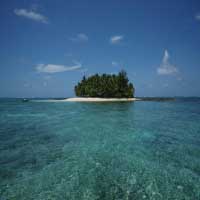
The thing that surprises me about this the most is CLF's cash costs (excluding depreciation amortization etc) of $106 for Canadian division-we have seen articles re domestic Chinese costs of $80-170/ton posted by grajekk.
But at any rate this is another evidence of much higher costs for some of the big boys in this business-including an Australian company posted about here-though a couple big boys have much lower costs than CLF's here. As I've noted from public articles re juniors costs CWRN's production cost is probably under 10-12/ton-not surprising as ore was only 10-14/ton til 2002
but some of these big boys rapidly ramped up costs w visions of capturing the entire worldwide increase in demand all by themselves last year when prices rose to 191.90/ton-showing that such wishful thinking is universal and not just limited to juniors-and experts had such hopeful thinking also-when CLF was $85pps ca 15 months ago analysts were highly recommending it w a target of $125 pps
Also implies CLF is running out of high grade North American ore and thus shifting to lower grades in Asian operations-probably like Indonesia.
China hasnt had high grade iron ore for a long time-sitting at 15-20% as per article grajekk posted and confirmed by articles I previously posted.
So those are things that inveigh in CWRN's favor.
Cliffs Natural Falls After Profit Misses Estimate: Detroit Mover
Cliffs decreased 8.7 percent to $38.99 at 11:01 a.m. in New York . Earlier the shares slumped 10 percent, the most intraday since July 26.
Net income slid 86 percent to $85.1 million, or 59 cents a share, from $601.2 million, or $4.15, a year earlier, the Cleveland-based company said yesterday in a statement. Profit from continuing operations was 61 cents a share, missing the $1.02 average of 21 estimates compiled by Bloomberg. Sales dropped 30 percent to $1.45 billion.
Cash costs in Cliffs’ Canadian division rose 21 percent to $106.06 a ton . Costs at the Bloom Lake Mine, which Cliffs acquired with its 2011 purchase of Consolidated Thompson Iron Ore Mines Ltd., increased 18 percent from a year earlier driven by higher fuel, labor, maintenance and supply expenses, the company said in the statement.
The price of seaborne iron ore fell 36 percent to an average of $112 a metric ton in the quarter, compared with $176 a year earlier, according to Steel Business Briefing data compiled by Bloomberg. Cliffs decreased its outlook for the spot price of iron ore this year by 12 percent to $128 a ton from a July forecast of $145 a ton.
The lower prices reflect “a significant mix shift to lower-grade ore in Asia Pacific and changes in customer mix in the U.S.,” Curt Woodworth, a New York-based analyst at Nomura Securities International Inc., wrote in a note today.
U.S. steelmakers used 75 percent of their capacity on average in the third quarter, compared with 76 percent a year earlier, according to data compiled by Bloomberg from the American Iron and Steel Institute . Capacity utilization has tumbled from 81 percent in April to 70 percent on Oct. 22.
Cliffs calculates cash costs based on the cost per ton of operating expenses and goods sold excluding depreciation, depletion and amortization.
To contact the reporter on this story: Sonja Elmquist in New York at selmquist1@bloomberg.net
To contact the editor responsible for this story: Steven Frank at sfrank9@bloomberg.net
